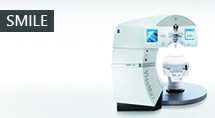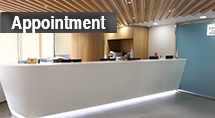FAQ's on SMILE surgery
Am I at risk of developing dry eyes after laser eye surgery?
In the vast majority of cases, post-operative dry eye only causes minimal discomfort (which can be relieved with the lubricating drops in your medication pack), and will resolve with time. Compared with LASIK, SMILE induces less dry eyes.
Can I receive other eye operations after SMILE? (Such as: cataract surgery)
Yes, you can. SMILE surgery will only change the shape of the cornea. Other tissues in the eye are not affected. Therefore, you can receive other eye operations after SMILE.
Can I wear cosmetic or colored contact lens after receiving SMILE surgery?
As the curvature of the cornea will be changed after SMILE, patients may experience some discomfort while wearing contact lenses. If you feel discomfort, you should avoid wearing them and consult your doctor. It is recommended to withhold contact lens wear during the first month after LASIK or SMILE surgery.
How long will the surgery last?
The time inside the operation theatre ranges from 15 minutes to 20 minutes, but if we include the preparation time before operation and the post-operative monitoring, the total time at our center will be around 2 hours. Most patients enjoy remarkable vision improvement within one to two days after refractive surgery. However, this recovery time varies from one patient to another. It is important to note that full visual recovery may sometimes take up to three to six months.
Difference between LASIK and SMILE?
LASIK surgery involves creation of a flap measuring around 20mm in circumference, and the corneal nerve may take some time to recover. Thus, dry eye syndrome is a common condition in the early post-operative period.
SMILE surgery is a flapless procedure and only a 2-4mm incision is required. Thus, it has a lower incidence of post-operative dry eye when compared with LASIK surgery, and faster wound recovery. It also eliminates the risk of flap-related complications.
SMILE surgery is not suitable for correction of hyperopia, myopia more than 10 diopters, or astigmatism more than 4 diopters
Is it necessary to attend a hospital?
No. Modern refractive surgery is fast and safe; and no anesthesia (apart from anesthetic eyedrops) is required. Therefore, there is no need to be admitted to a hospital.
Does LASIK refractive surgery hurt?
Some of our patients may experience little but acceptable discomfort during the procedure. Right after the surgery, some patients may have a foreign body sensation, tearing, or light sensitivity.
How much time do I need to take off from work after the surgery?
It depends on your job nature. You are advised to rest for 1 to 2 days after the surgery. Many patients can go back to work in 2-3 days following LASIK or SMILE surgery. Air travel would not be affected after LASIK or SMILE.
Who is not suitable for laser eye surgery?
- The refractive error is not stable in the past year
- The cornea is too thin
- Suffering from keratoconus / forme fruste keratoconus
- Suffering from cataracts or glaucoma
- Immune system problems, such as rheumatoid arthritis, lupus etc.
- Pregnant or lactating woman
Does LASIK or SMILE surgery reduce the risk of developing cataracts, retinal detachment and glaucoma at a later date?
In refractive surgery, we modify the corneal curvature in order to eliminate the need of spectacles. The underlying shape of other parts of the eye (eg retina) are not changed. Thus, the risk of developing other ocular conditions such as cataract remains the same. Patients with high myopia (more than 6 diopters) before refractive surgery are advised to undergo regular ophthalmic check-up since they are at risk of developing these conditions.






